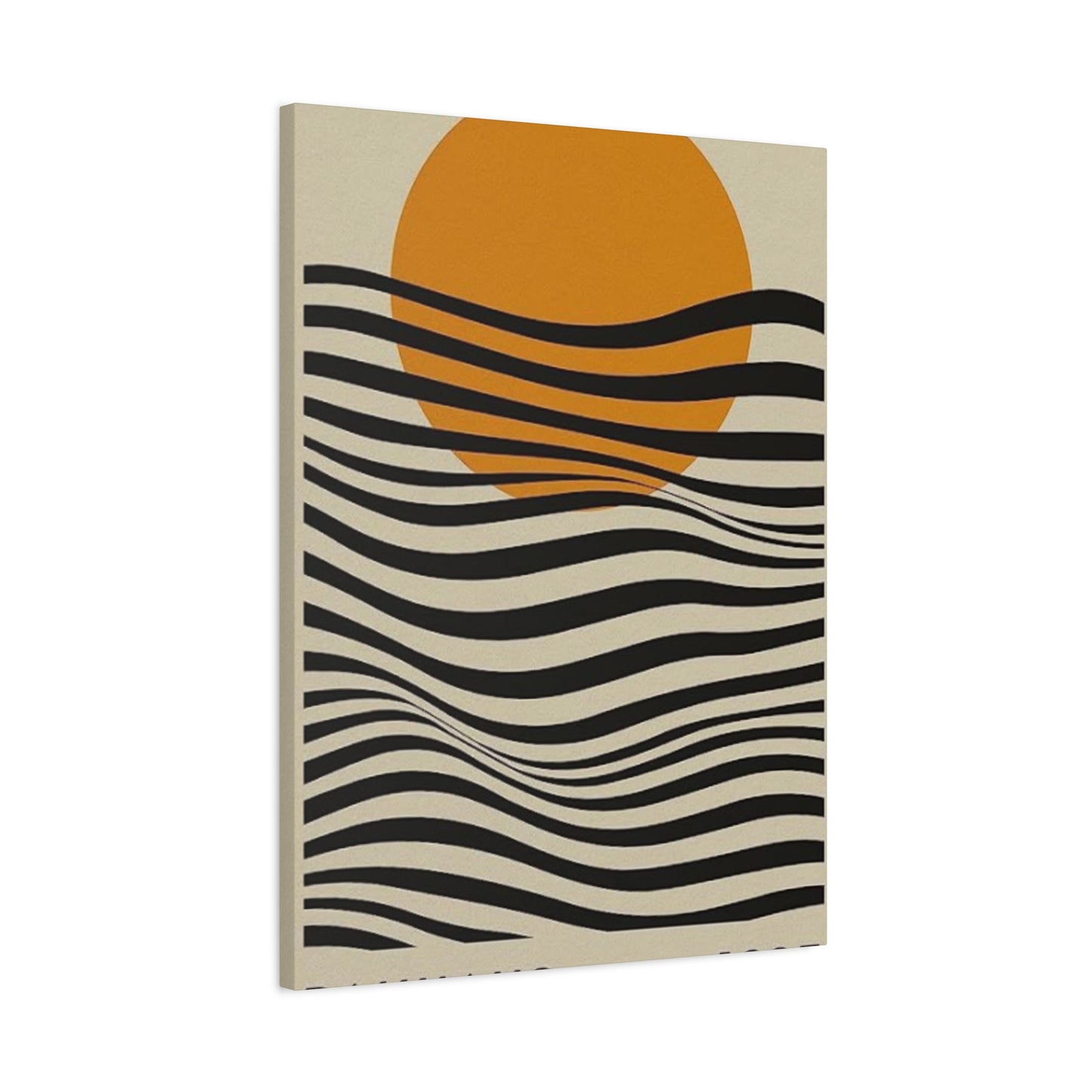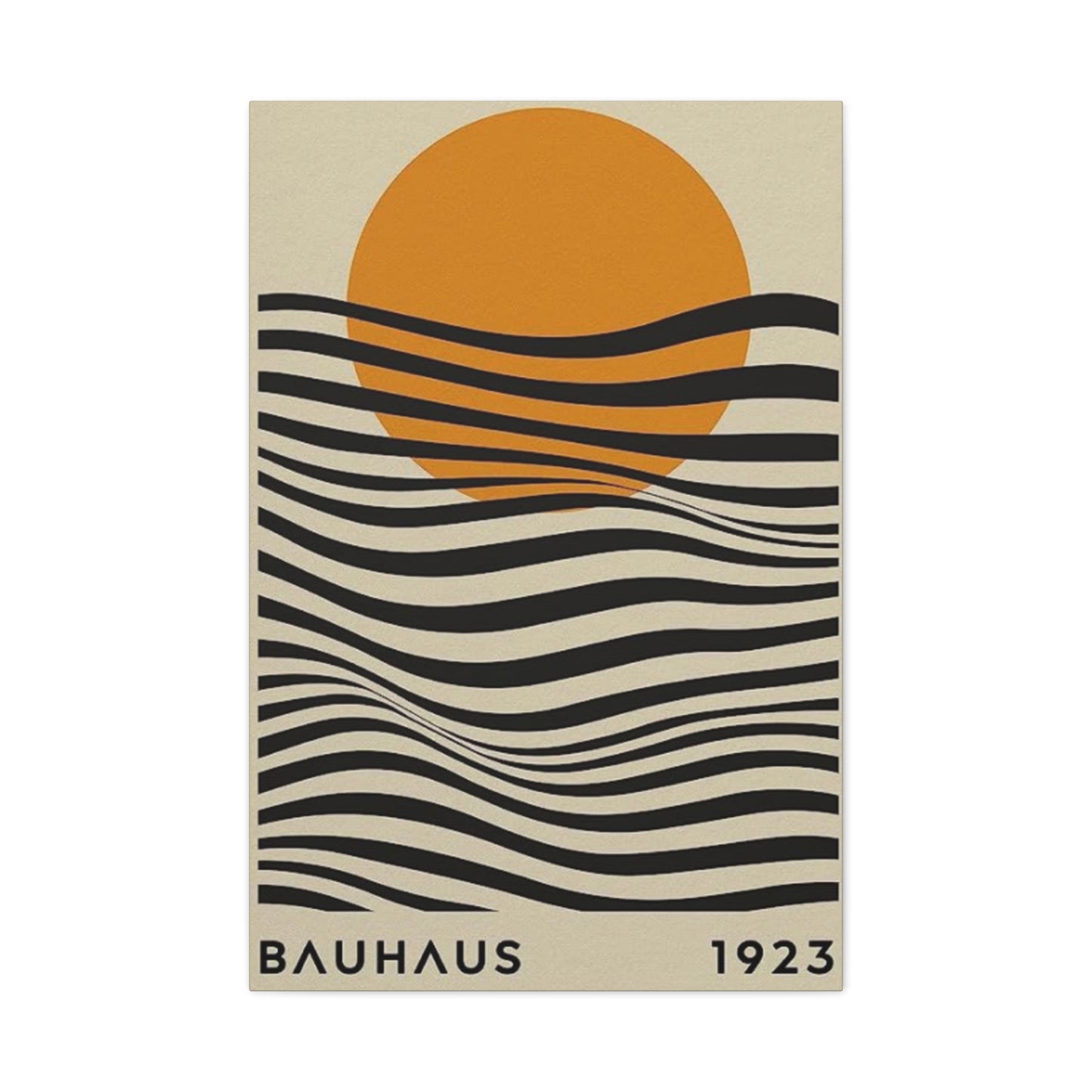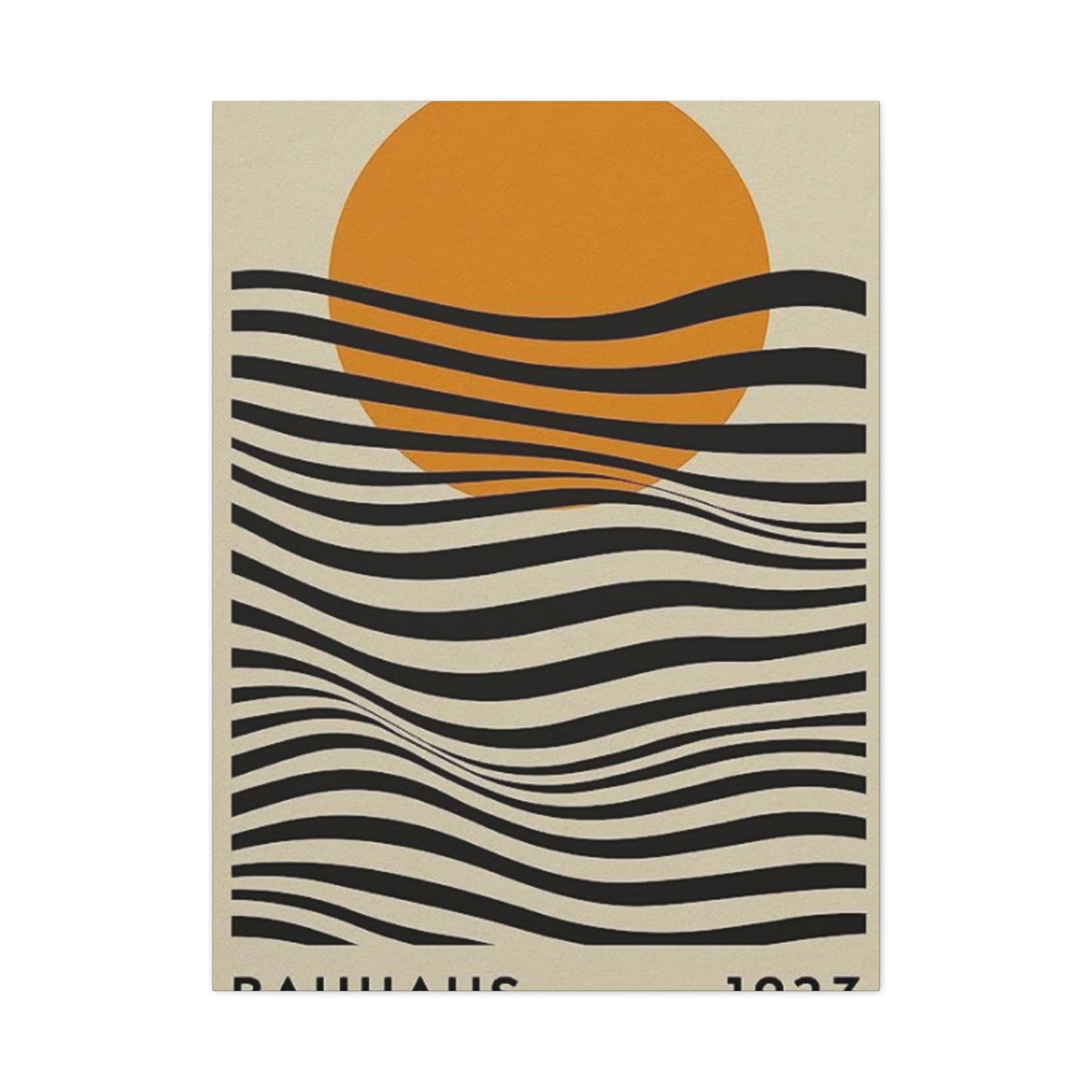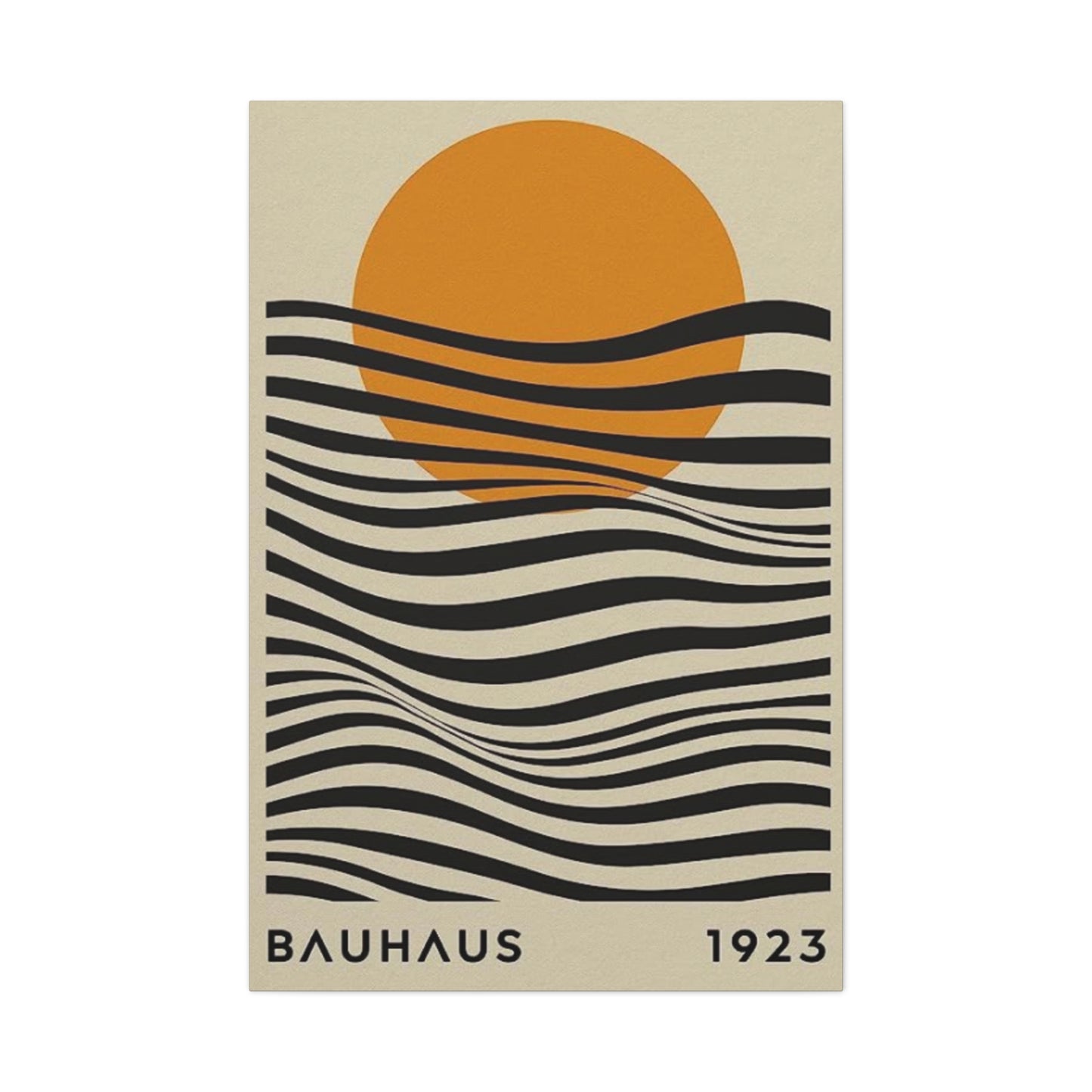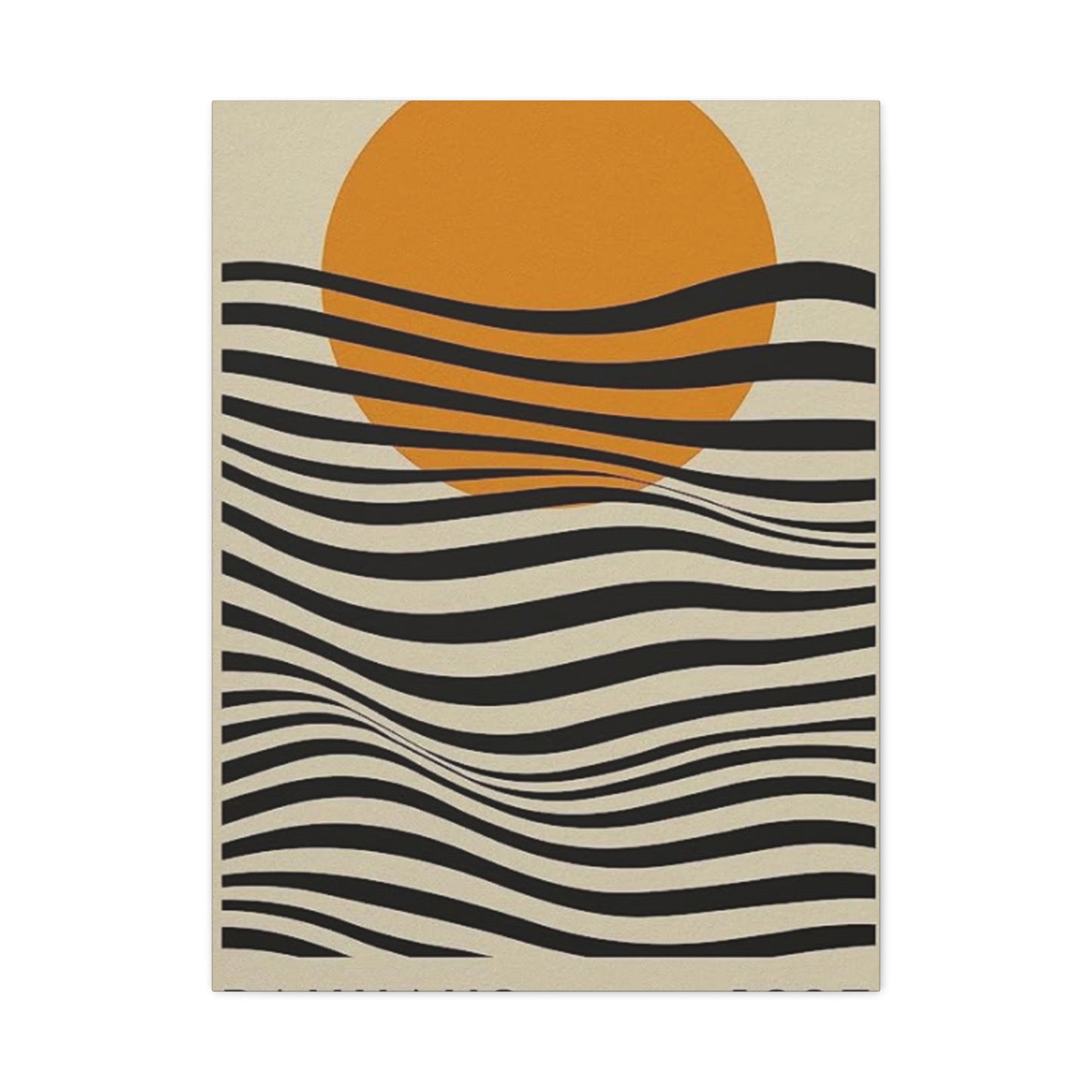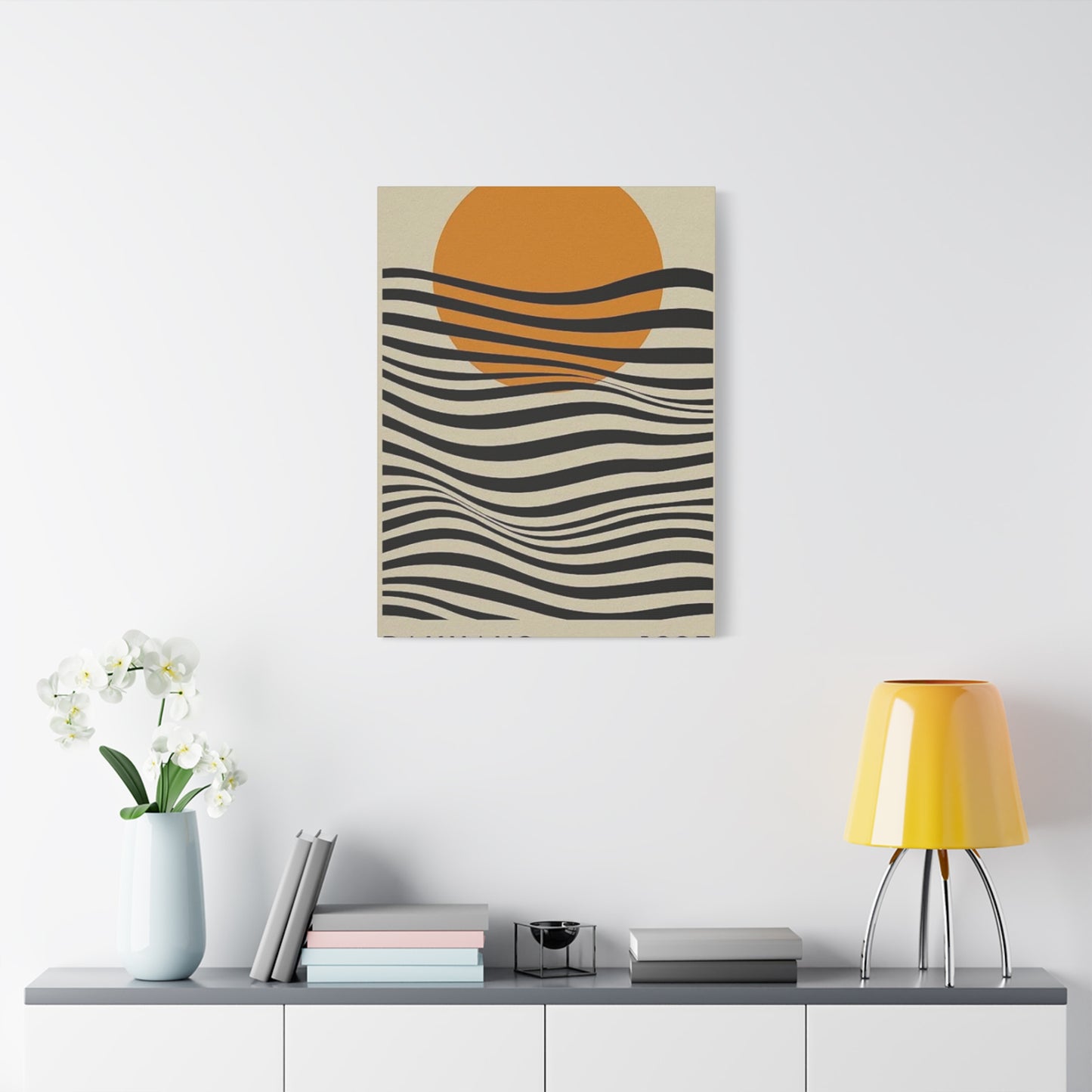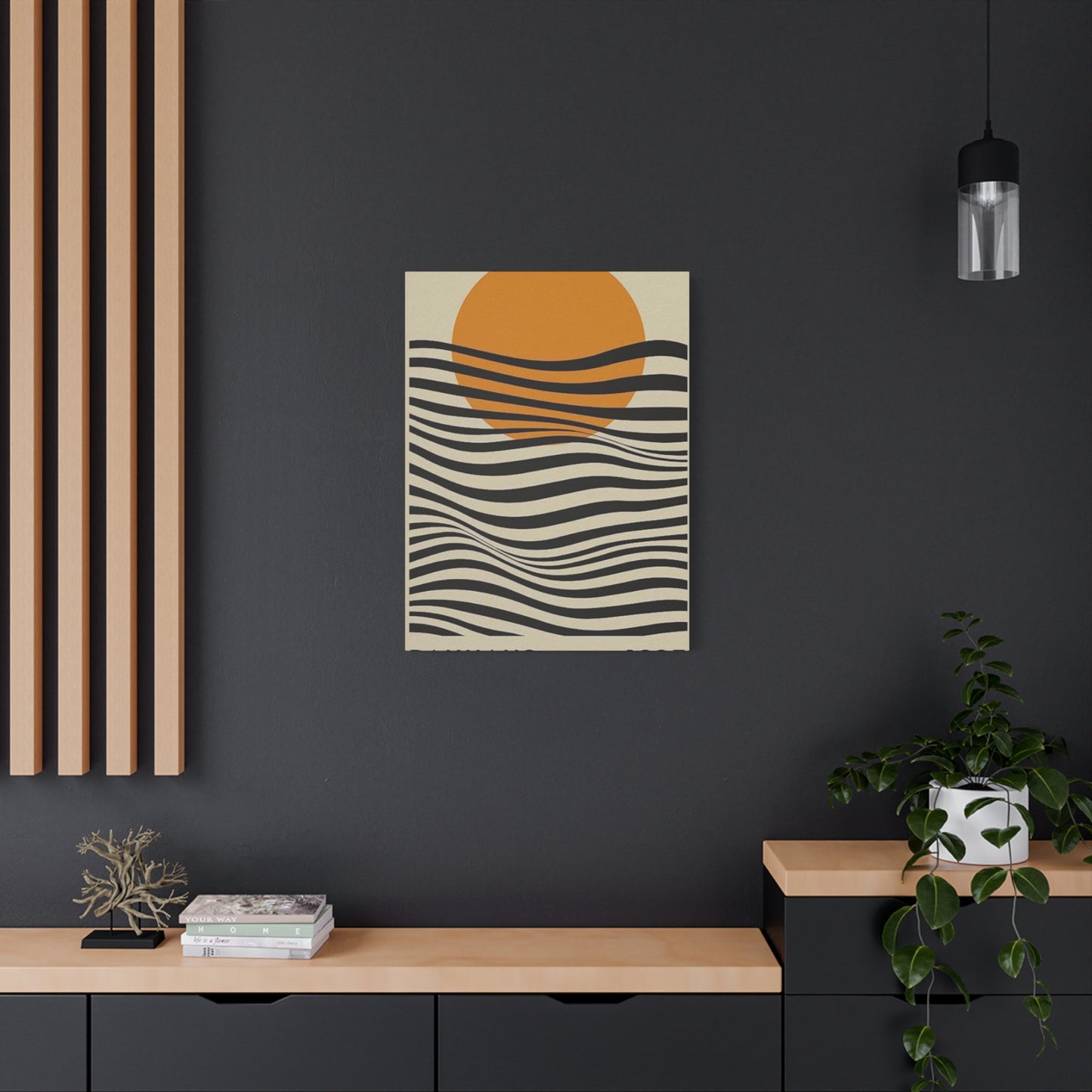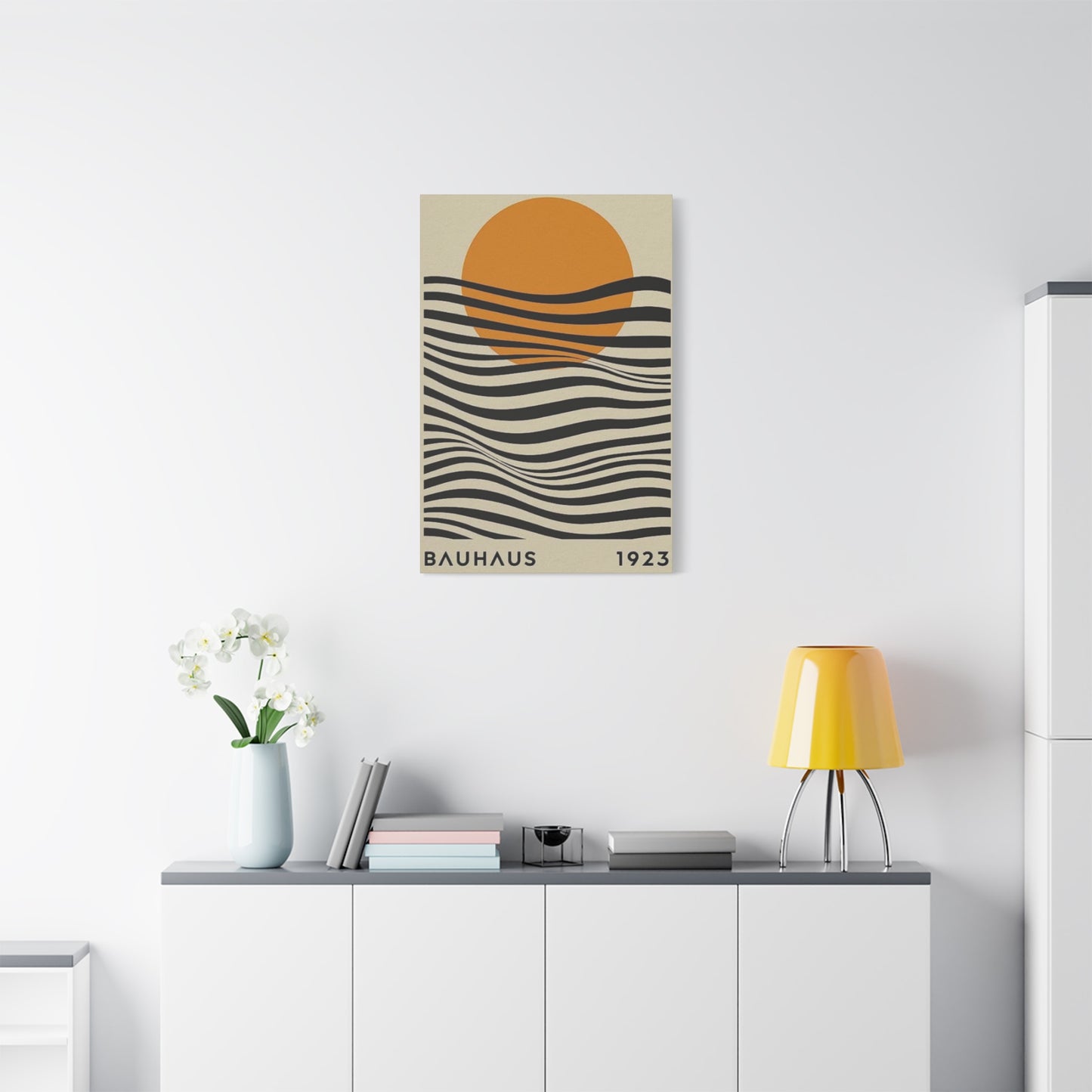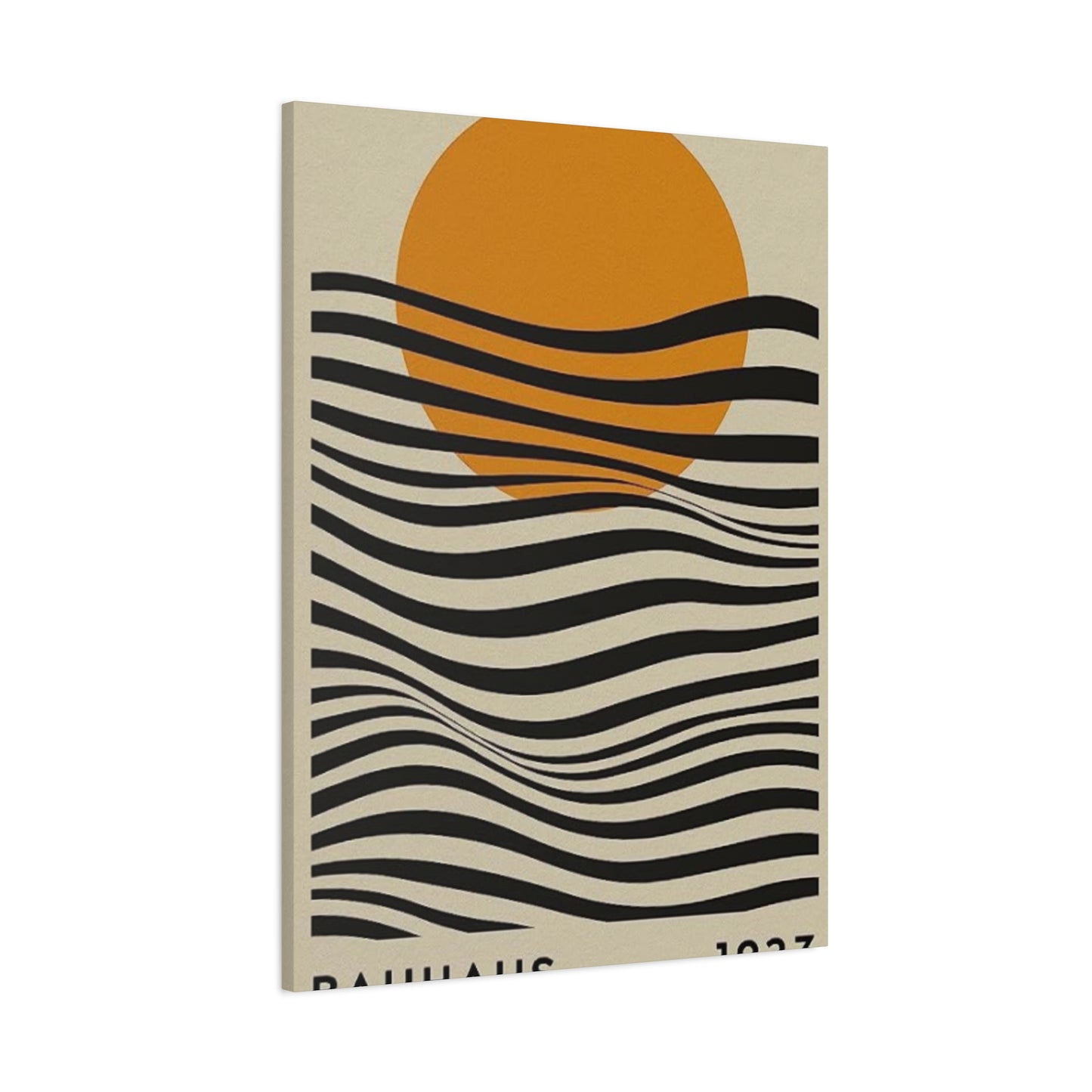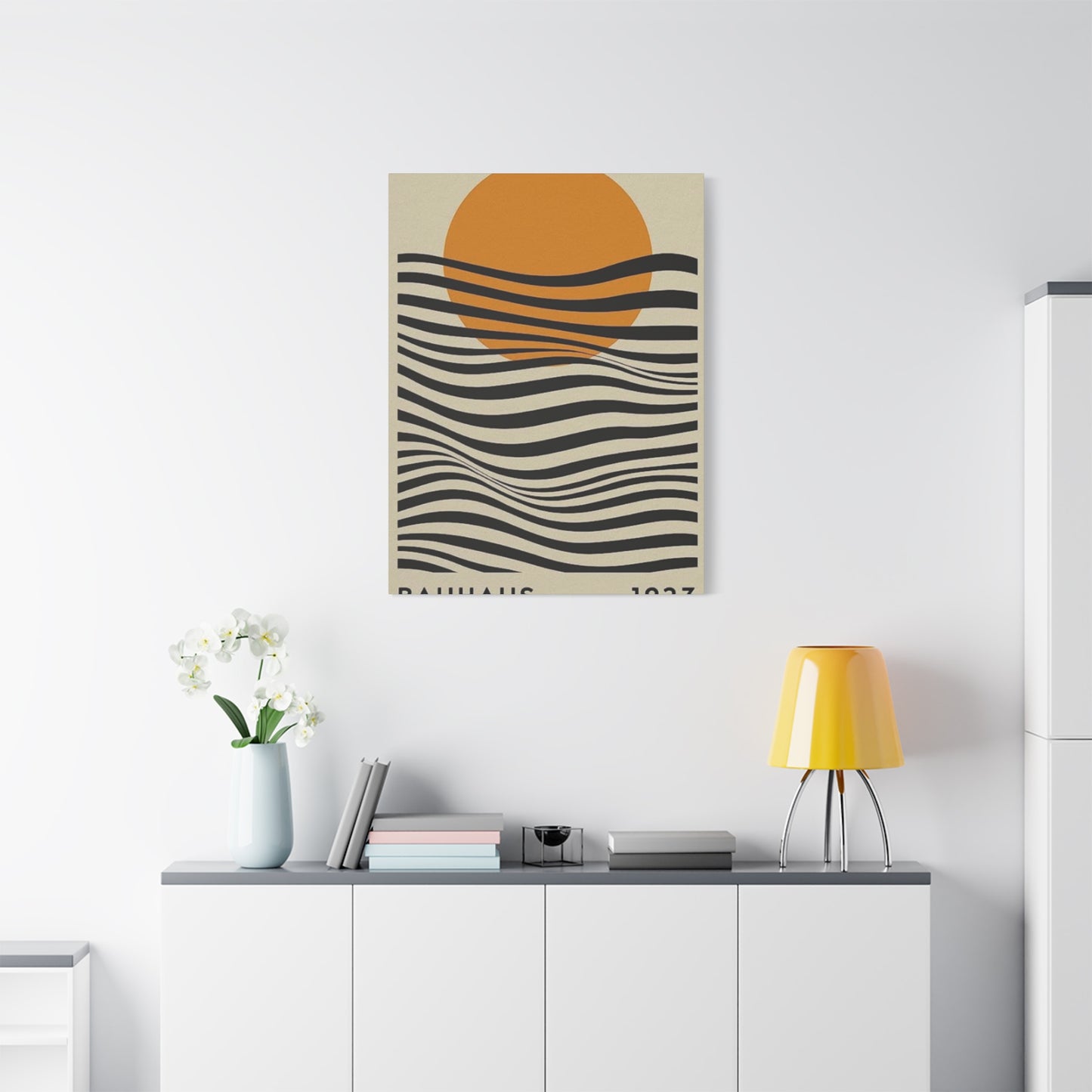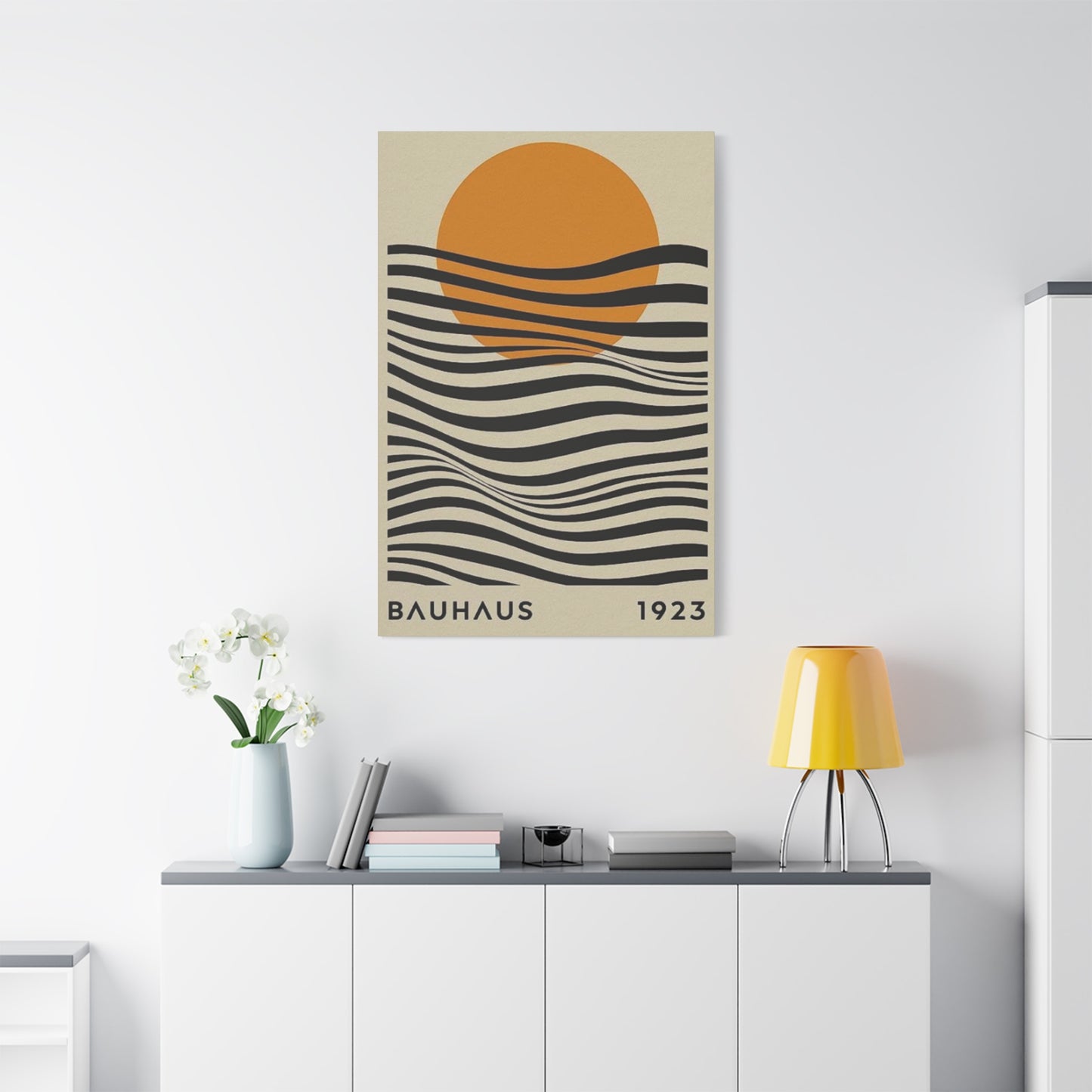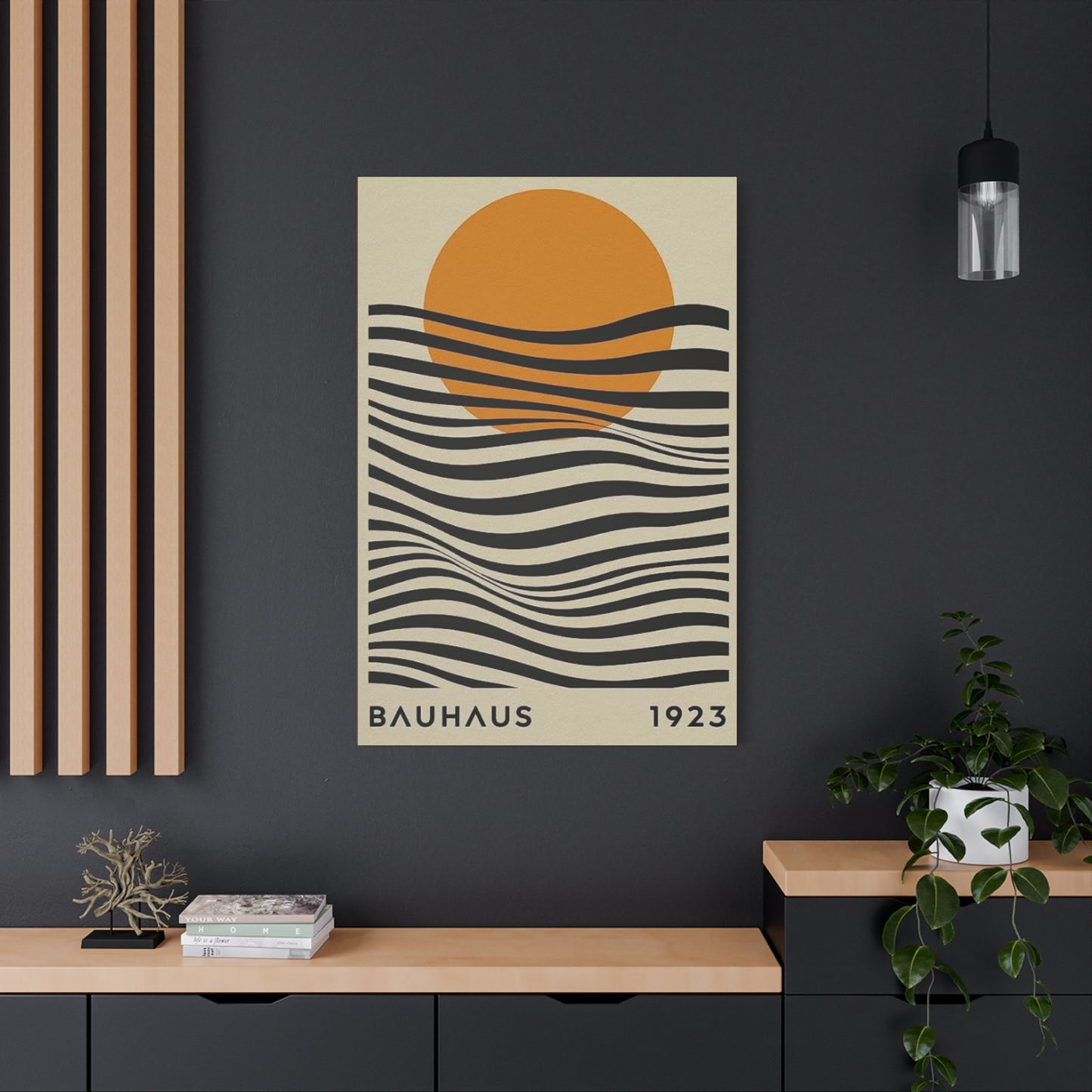The Beauty of Sea Sunset in Modernism Wall Art: A Perfect Blend of Nature and Style
The fusion of oceanic twilight imagery with modernist design principles creates an extraordinary visual experience that has captivated interior designers and art enthusiasts worldwide. The combination of sea sunset modernism wall art represents more than mere decoration; it embodies a philosophy of bringing natural tranquility into contemporary living spaces while maintaining clean, sophisticated aesthetics that define modern design sensibilities.
The Artistic Movement Behind Coastal Evening Modernist Design
Modernism in art emerged as a revolutionary movement that sought to break away from traditional artistic conventions. When applied to coastal evening imagery, this movement transforms simple seascapes into powerful statements of color, form, and emotion. The modernist approach strips away unnecessary details, focusing instead on the essential elements that capture the essence of twilight over water. This artistic philosophy emphasizes geometric shapes, bold color blocking, and simplified compositions that speak directly to the viewer's emotional core.
The development of this particular aesthetic draws inspiration from various artistic movements including Abstract Expressionism, Minimalism, and Color Field painting. Artists working in this genre understand that the meeting point of sea and sky during sunset offers infinite possibilities for exploring color relationships, atmospheric conditions, and the interplay of light and shadow. The modernist lens through which these scenes are interpreted allows for both representational and abstract interpretations, giving collectors and decorators remarkable flexibility in choosing pieces that resonate with their personal aesthetic preferences.
Contemporary artists working in this field often employ techniques that blur the boundaries between photography, digital art, and traditional painting. This interdisciplinary approach results in wall art that feels both timeless and utterly contemporary. The use of modern production methods ensures that these pieces can be reproduced with exceptional quality, making high-end aesthetic accessible to a broader audience while maintaining the integrity of the original artistic vision.
Design Principles That Define Modernist Coastal Art
The core principles of modernist design manifest clearly in quality coastal evening artwork. Simplification stands as perhaps the most fundamental principle, with artists reducing complex natural scenes to their most essential visual elements. This process of distillation requires both technical skill and artistic vision, as the artist must determine which elements are truly necessary to convey the essence of the scene and which can be eliminated without loss of meaning or impact.
Geometric abstraction frequently appears in these works, with horizon lines becoming strong horizontal elements that divide the composition into clear zones. These divisions might be crisp and definite or softly graduated, but they always serve to create visual structure and guide the viewer's eye through the composition. The use of geometric shapes to represent natural forms creates an interesting tension between the organic and the constructed, between nature and human interpretation.
Balance and proportion receive careful attention in modernist coastal art. Rather than creating symmetrical compositions, artists often employ dynamic asymmetry that creates visual interest while maintaining overall equilibrium. The rule of thirds frequently governs composition, with key elements placed at intersecting points to create natural focal areas that draw and hold the viewer's attention.
Negative space becomes an active compositional element rather than merely empty background. In the context of sea sunset imagery, expansive areas of sky or water are not voids but integral parts of the composition that provide breathing room and allow the more detailed or colorful areas to shine. This thoughtful use of negative space is one of the hallmarks that distinguishes sophisticated modernist work from more conventional decorative art.
Interior Design Styles That Complement Coastal Evening Art
Scandinavian design, with its emphasis on natural light, minimal clutter, and connection to nature, provides an ideal context for sea sunset modernism wall art. The neutral color palettes typical of Scandinavian interiors allow the blues, oranges, and pinks of sunset imagery to pop without creating visual competition. The clean lines and functional approach of this design style align perfectly with modernist artistic principles, creating seamless integration between art and environment.
Coastal or nautical design themes obviously pair well with ocean evening imagery, though the modernist interpretation elevates these spaces beyond typical beach house cliches. Rather than relying on obvious nautical symbols like anchors and sailboats, modernist coastal art brings the essence of the seaside environment into interior spaces through color, light, and atmosphere. This approach creates sophisticated coastal spaces that feel curated and intentional rather than theme-park-like.
Contemporary minimalist interiors benefit tremendously from the focused color impact that sunset art provides. In spaces dominated by white, grey, and black, a large-scale piece featuring sunset hues becomes a controlled injection of warmth and life. The simplified compositions typical of modernist work ensure that the art enhances rather than clutters the minimalist aesthetic, maintaining the sense of calm and spaciousness that defines this design approach.
Mid-century modern spaces, with their emphasis on organic shapes, natural materials, and connection between indoor and outdoor environments, naturally accommodate coastal evening artwork. The color palettes of both the design style and the artwork often overlap, with earthy browns and greens providing common ground while the sunset's oranges and pinks add complementary warmth. The period-appropriate aesthetic of modernist art creates temporal cohesion that makes the entire space feel authentic and well-considered.
Commercial Applications in Professional Spaces
Healthcare facilities increasingly recognize the therapeutic value of nature-based artwork, with coastal evening scenes proving particularly effective in waiting areas, patient rooms, and treatment spaces. The calming color palettes and horizon-focused compositions help reduce patient anxiety and create more pleasant healing environments. Research has shown that patients recovering in rooms with nature imagery report lower pain levels and require less pain medication than those in rooms without such visual elements.
Corporate offices utilize sea sunset modernism wall art to humanize otherwise sterile work environments and boost employee wellbeing. Conference rooms benefit from the calm, balanced energy that these pieces provide, potentially facilitating more productive and less contentious meetings. Executive offices feature larger, more dramatic pieces that convey sophistication and good taste while providing a visual respite from the demands of leadership roles.
Hospitality venues including hotels, resorts, and restaurants employ coastal evening artwork extensively to create ambiance and reinforce brand identity. Hotel lobbies featuring large-scale sunset pieces immediately communicate a sense of relaxation and escape, setting the tone for guests' entire stay. Restaurant dining rooms use such artwork to create atmosphere that enhances the dining experience, with the warm tones of sunset imagery proven to stimulate appetite and encourage longer stays.
Retail environments leverage the emotional impact of sunset imagery to create shopping experiences that feel less transactional and more experiential. High-end boutiques use carefully selected pieces to establish their brand aesthetic and create environments where customers want to linger. The aspirational quality of beautiful coastal scenes can subtly encourage purchasing behavior by associating products with desirable lifestyle imagery.
Color Coordination With Existing Decor
Successful integration of sea sunset modernism wall art requires considering existing color schemes and either complementing or thoughtfully contrasting with them. In rooms dominated by cool colors like blues, greys, and greens, sunset art with prominent warm tones creates energizing contrast that prevents spaces from feeling too cold or austere. The warm oranges and pinks provide necessary balance, making rooms feel more inviting and comfortable.
Neutral color schemes offer the greatest flexibility, allowing sunset art to introduce bold color without creating discord. In spaces featuring beiges, taupes, and whites, the artwork becomes the primary color story, defining the room's emotional tone and often inspiring accent color choices for pillows, throws, and other easily changed elements. This approach allows homeowners to essentially redecorate by simply changing artwork, with other elements following the color lead of the featured piece.
Monochromatic design schemes benefit from the tonal variations present in quality sunset imagery. A room decorated primarily in shades of blue can accommodate ocean sunset art that emphasizes the blue tones of water and twilight sky while the warmer sunset colors provide subtle accent notes. This approach maintains color discipline while adding sufficient variation to prevent monotony.
Analogous color schemes, which use colors adjacent on the color wheel, create harmonious environments that feel cohesive and restful. Sunset art featuring oranges, yellows, and reds pairs beautifully with interior schemes using these same color families, creating spaces that feel warm, energetic, and welcoming. This approach works particularly well in social spaces like living rooms and dining rooms where stimulating conversation and activity is desired.
Lighting Considerations for Optimal Display
Natural lighting dramatically affects how sea sunset modernism wall art appears throughout the day. South-facing walls receive consistent bright light that can wash out colors and create glare, making them less ideal for artwork unless window treatments allow for light control. North-facing walls receive more consistent, indirect light that shows colors accurately without the harsh contrast created by direct sunlight.
Artificial lighting requires careful planning to showcase artwork effectively without causing damage. LED picture lights mounted directly above frames provide focused illumination that highlights the artwork while minimizing light spill into the surrounding space. These fixtures should use bulbs with high Color Rendering Index ratings to ensure colors appear accurate and vibrant. The color temperature of bulbs also matters, with 3000K to 4000K generally providing the best balance between warmth and color accuracy.
Track lighting offers flexibility, allowing for adjustment of both angle and intensity to accommodate different pieces and changing display needs. When lighting sunset art, angling lights at approximately 30 degrees from vertical helps minimize glare while providing even illumination across the entire surface. Dimmer switches enable adjustment of lighting intensity to suit different times of day and activities, preventing over-illumination that can cause eye strain and accelerate fading.
Ambient room lighting should be considered as part of the overall display strategy. Wall-washing techniques that illuminate entire walls can make artwork feel integrated into the architecture rather than merely hung on surfaces. For sunset pieces specifically, warmer ambient lighting in the 2700K to 3000K range can enhance the warm tones present in the artwork, creating cohesion between the art and its environment.
Frame Selection and Presentation Options
Traditional wood frames remain popular for their warmth and versatility, with finishes ranging from light natural woods to deep espressos. For modernist coastal art, simpler frame profiles generally work better than ornate designs, allowing the artwork itself to remain the focus. Light woods like oak or maple complement the natural themes while maintaining the clean aesthetic modernism requires, while darker woods provide definition and structure that helps artwork stand out from lighter walls.
Metal frames offer a more contemporary option that aligns well with modernist artistic principles. Thin black metal frames provide crisp definition without visual weight, creating gallery-like presentations that feel professional and current. Brushed silver or gold metal frames add subtle luxury while maintaining the clean lines essential to modern design. These frames work particularly well with acrylic or metal print substrates, creating cohesive presentations where materials reinforce the contemporary aesthetic.
Floater frames create the illusion that artwork floats within the frame, with a small gap between the edge of the canvas and the frame's inner edge. This presentation style works beautifully with canvas prints and adds depth and dimensionality to the display. The shadow created by the gap gives pieces a substantial, three-dimensional quality that standard frames cannot achieve. Floater frames come in various depths, with deeper frames creating more dramatic shadow effects.
Frameless presentations using gallery-wrapped canvas eliminate the frame entirely, with the image continuing around the edges of the stretched canvas. This approach creates clean, modern presentations that maximize the visual impact of the artwork itself. The edges can either show a continuation of the image, a solid color, or even a mirror of the main image, depending on the desired effect. Frameless presentations work well in contemporary and minimalist spaces where any frame might feel like unnecessary ornamentation.
Seasonal Adaptation Through Artwork Rotation
Strategic rotation of wall art allows spaces to evolve with seasonal changes, maintaining visual interest and adapting room ambiance to different times of year. Summer displays might feature brighter, more vibrant sunset pieces with prominent oranges and yellows that reflect the season's energy and warmth. These pieces complement the longer days and active outdoor lifestyle typical of summer months, extending the feeling of sunshine into interior spaces.
Autumn calls for artwork emphasizing deeper, richer tones including burgundies, deep oranges, and purple-tinged twilight skies. These pieces reflect the changing natural color palette and create cozy, contemplative atmospheres appropriate for the season's inward turn. The golden hour light of autumn sunsets has unique qualities that differ from summer, and artwork can capture and extend these atmospheric differences.
Winter artwork might focus on more dramatic, moody coastal scenes with steely blues and subtle twilight coloration. These pieces acknowledge the season's more subdued natural light while providing visual warmth that counteracts the cold outside. Sunset imagery becomes particularly valuable during winter months when actual sunlight exposure is limited, serving as reminders of brighter times and helping to combat seasonal affective disorder.
Spring rotations might return to lighter, more optimistic imagery with soft pastels and gentle color transitions that mirror the season's gradual awakening. These pieces celebrate renewal and growth, their hopeful quality aligning with the natural world's emergence from winter dormancy. The increasing daylight hours of spring are reflected in artwork that emphasizes the luminous quality of lengthening evenings.
Budget-Friendly Approaches to Quality Coastal Art
Digital downloads from independent artists provide the most economical entry point to quality coastal art. Many talented creators offer high-resolution files that purchasers can print locally, often at fraction of the cost of purchasing pre-made pieces. This approach requires finding a quality local printer but offers maximum flexibility in sizing and substrate choices. Purchasers should ensure they're buying from legitimate sources where artists retain proper rights to the images.
Print-on-demand services have democratized access to quality wall art by eliminating inventory costs and enabling made-to-order production. These services offer competitive pricing on canvas prints, framed pieces, and specialty substrates while maintaining reasonable quality standards. While not matching the quality of premium art prints, POD pieces provide attractive, durable wall decor at accessible price points. Shopping during sales events can yield significant savings without compromising on size or presentation quality.
Thrift stores, estate sales, and secondhand marketplaces occasionally yield remarkable finds for those willing to hunt. Original paintings or limited edition prints from decades past can be acquired for minimal cost, often requiring only simple cleaning or reframing to become showpiece-worthy. This approach has the added benefit of supporting sustainable consumption while potentially uncovering truly unique pieces impossible to find through conventional retail channels.
DIY approaches allow creatively inclined individuals to create their own modernist coastal art using accessible materials and techniques. Abstract sunset paintings require minimal technical skill while offering tremendous creative satisfaction and personalization opportunities. Acrylics on canvas provide an approachable medium for beginners, with sunset scenes forgiving of imperfect technique since abstract interpretations embrace spontaneity and happy accidents. Online tutorials make learning basic techniques accessible to anyone willing to invest time and modest materials costs.
Investment-Grade Fine Art Considerations
For collectors viewing art as financial investment rather than merely decoration, certain factors determine potential appreciation. Limited edition prints with certificates of authenticity from established artists offer better investment prospects than open-edition commercial prints. The edition size matters significantly, with smaller editions generally commanding higher values and appreciating more reliably. Numbering and artist signatures add value, particularly when accompanied by documentation proving provenance.
Original paintings by emerging or established artists represent the apex of investment potential in coastal art. While requiring substantial initial investment, original works can appreciate dramatically as artists' reputations grow. Researching artists' exhibition history, critical reception, and sales records helps identify promising talents before their work becomes prohibitively expensive. Regional artists focused on local coastal scenes sometimes offer particular investment opportunity in their home markets.
Conservation and preservation become paramount considerations for investment-grade pieces. Professional framing using archival materials, UV-filtering glass, and acid-free mounting prevents deterioration that would destroy investment value. Display locations should avoid direct sunlight, high humidity, and temperature extremes that accelerate aging. Insurance coverage specifically for art ensures financial protection against theft, damage, or loss, with regular appraisals keeping coverage amounts appropriate to current market values.
Documentation including purchase receipts, certificates of authenticity, condition reports, and appraisals should be maintained meticulously. This paperwork substantiates ownership claims and provenance, essential for both insurance purposes and eventual resale. Photographs taken at time of acquisition establish baseline condition, allowing for tracking of any changes over time and supporting insurance claims if damage occurs.
Cultural Significance of Sunset Imagery Across Societies
Throughout human history, sunset imagery has carried profound symbolic significance across virtually all cultures. The daily death and rebirth cycle of the sun forms the basis of countless mythologies, religious beliefs, and philosophical frameworks. Coastal sunsets specifically merge this solar symbolism with water's associations with emotion, the subconscious, and life itself, creating images that resonate at deep psychological and cultural levels.
Eastern philosophical traditions including Buddhism and Taoism find in sunset imagery representations of impermanence, mindfulness, and the beauty of transient moments. The Japanese concept of "mono no aware," the bittersweet awareness of impermanence, finds perfect visual expression in sunset scenes. This philosophical tradition encourages appreciation of beautiful moments precisely because they are fleeting, an idea perfectly captured in the temporary glory of twilight.
Western religious traditions often associate sunset with endings, reflection, and transition between states of being. The Christian tradition of evening prayers recognizes sunset as a natural moment for contemplation and spiritual focus. The visual symbolism of light emerging from or descending into darkness carries theological significance related to concepts of divine presence, guidance, and hope. These associations give sunset imagery emotional resonance even for secular viewers shaped by these cultural traditions.
Indigenous coastal cultures worldwide have developed rich traditions of sunset observation and interpretation. For seafaring peoples, sunset conditions provided crucial navigational information and weather prediction data. This practical relationship developed into spiritual and aesthetic appreciation, with sunset imagery appearing prominently in traditional arts, stories, and ceremonial practices. Contemporary coastal art drawing on these traditions creates cultural continuity while expressing timeless themes in modern visual languages.
Environmental Awareness Through Coastal Art
The popularity of ocean sunset imagery in contemporary art coincides with growing environmental awareness and concern for marine ecosystems. While decorative in nature, these images can serve as reminders of what stands to be lost through climate change, pollution, and habitat destruction. The pristine, idealized coastlines depicted in most sunset art present a vision of natural beauty worth protecting, potentially motivating viewers toward more environmentally conscious behavior.
Some artists working in this genre explicitly incorporate environmental messaging into their work, using sunset imagery as entry points for discussions about ocean acidification, coastal erosion, and marine life preservation. The beautiful surface appeal attracts viewers who might otherwise avoid environmental content, then subtly communicates deeper messages about humanity's relationship with marine environments. This approach makes environmental advocacy accessible and emotionally engaging rather than didactic or guilt-inducing.
The production methods used for creating and reproducing coastal art also carry environmental implications worth considering. Eco-conscious consumers seek artwork produced using sustainable materials, non-toxic inks, and ethical labor practices. Bamboo or reclaimed wood frames, recycled canvas materials, and water-based inks allow purchasers to decorate beautifully while minimizing environmental impact. Some artists and producers offset carbon emissions from shipping and production, appealing to environmentally committed consumers.
Digital art displays using e-paper or efficient screens offer an emerging alternative to physical prints, dramatically reducing material consumption and waste. While currently limited by technology and cost, these systems allow for displaying rotation of multiple images on a single device, providing variety without environmental cost. As this technology improves and becomes more affordable, it may represent the future of wall art for environmentally conscious consumers.
Emerging Trends in Contemporary Coastal Art
Augmented reality integration represents an exciting frontier in wall art, with static images serving as triggers for digital overlays visible through smartphone or tablet screens. Sunset scenes might animate with gently moving water, shifting clouds, or gradually changing light, adding temporal dimension to static displays. While still nascent, this technology promises to revolutionize how people interact with wall art, creating immersive experiences that bridge physical and digital realms.
Sustainable and eco-conscious art production continues growing in importance as consumers increasingly prioritize environmental considerations in purchasing decisions. Artists and producers highlighting sustainable practices, from sourcing to shipping, appeal to this market segment while genuinely reducing environmental impact. Some creators partner with environmental organizations, directing portions of proceeds toward ocean conservation or coastal habitat restoration, allowing purchasers to support causes while decorating their homes.
Personalization services allowing customers to customize colors, compositions, or other elements of coastal art are becoming more sophisticated and accessible. Rather than choosing from predefined options, purchasers can work directly with artists or through sophisticated online tools to create truly unique pieces tailored to their specific spaces and preferences. This mass-customization approach combines the affordability of reproductions with the uniqueness of commissioned work.
Mixed-media approaches combining digital imagery with physical materials like resin, metallics, or textural elements add dimensionality and tactile interest to coastal pieces. These hybrid works exist somewhere between traditional prints and sculpture, creating visual and physical depth impossible with flat prints alone. The hand-finishing of these pieces makes each one unique despite starting from digital source files, appealing to collectors seeking something special beyond standard reproductions.
Installation Best Practices for Longevity
Proper installation begins with identifying appropriate hanging hardware for both the artwork's weight and the wall's composition. Drywall requires different hardware than plaster, brick, or concrete, with each surface type having optimal solutions. For pieces weighing over 20 pounds, installing directly into wall studs provides maximum security, while lighter pieces can safely hang from drywall anchors rated for appropriate weights.
Height placement significantly impacts how effectively artwork communicates with viewers and integrates into room design. The standard guideline of centering artwork at 57 to 60 inches from the floor places images at average adult eye height, though this should be adjusted based on room function and viewing angles. In dining rooms where people sit, hanging slightly lower accommodates seated viewing positions. In stairwells and hallways, center height might shift to accommodate the changing floor levels and viewing angles.
Wall preparation including cleaning, minor repairs, and painting creates optimal display surfaces. Dust, grease, and residue on walls can transfer to artwork over time, potentially causing staining or deterioration. Fresh paint provides clean surfaces while offering opportunity to adjust wall color to better complement the artwork. Allowing sufficient drying time before hanging artwork prevents paint fumes from affecting the piece.
Leveling tools ensure artwork hangs straight, with even minor tilting creating visual discomfort that undermines the piece's impact. Laser levels or smartphone apps with digital level functions provide precision impossible with traditional bubble levels. For multi-piece arrangements, maintaining consistent spacing and alignment across all elements creates visual harmony essential to cohesive installations.
The Role of Abstraction Levels in Viewer Connection
Highly representational coastal sunset art appeals to viewers seeking clear, recognizable imagery that requires minimal interpretation. These pieces provide comfort through familiarity, depicting scenes that viewers can immediately understand and relate to personal experiences of visiting beaches or watching sunsets. The accessibility of representational work makes it particularly appropriate for commercial spaces and homes where diverse audiences with varying art knowledge and preferences will encounter it.
Moderate abstraction that simplifies forms while maintaining recognizability offers a middle ground that appeals to broad audiences. These pieces retain enough representational elements that viewers understand the subject matter but employ enough simplification and stylization to feel artistic rather than photographic. This balance between accessibility and artistic sophistication makes moderately abstracted coastal art extremely popular in residential settings where homeowners want pieces that feel elevated but not alienating.
High abstraction that reduces coastal evening scenes to pure color relationships and geometric forms appeals to sophisticated audiences comfortable with ambiguity and interpretation. These pieces prioritize emotional response and aesthetic experience over representation, inviting viewers to bring their own meanings and associations. The lack of obvious subject matter allows these pieces to integrate into diverse design schemes without creating thematic conflicts, functioning as pure design elements while still carrying subtle references to natural inspiration.
The optimal abstraction level depends on room function, inhabitant preferences, and overall design goals. Spaces intended for relaxation might benefit from more representational imagery that clearly communicates natural tranquility, while creative work spaces might be energized by more abstracted pieces that stimulate imagination without imposing specific narratives. Understanding personal responses to different abstraction levels helps in selecting pieces that will provide lasting satisfaction rather than becoming tiresome or uncomfortable over time.
Architectural Integration Techniques
Built-in displays including recessed wall niches or purpose-built alcoves elevate artwork from decoration to architectural element. These features, ideally planned during construction or major renovation, provide ideal viewing conditions while protecting artwork from accidental damage. Proper lighting integration, with fixtures hidden within the recess, creates gallery-quality display that enhances both the artwork and the space's overall design sophistication.
Focal wall treatments that emphasize a single wall through contrasting paint color, wallpaper, or material finish naturally accommodate large-scale coastal art as the culminating element of the design. This approach creates hierarchy and visual interest in open spaces that might otherwise feel undefined or chaotic. The focal wall strategy works particularly well in contemporary open-plan homes where traditional room boundaries don't exist and visual techniques must create zones and interest.
Architectural symmetry influences optimal artwork placement, with pieces often positioned to reinforce or thoughtfully counter existing symmetries. In rooms with centered architectural features like fireplaces or windows, flanking these elements with matching pieces creates formal balance. Alternatively, using large-scale coastal art to create a new focal point that competes with or redirects from architectural features can solve design problems in rooms with awkwardly placed or unattractive built-in elements.
Sightlines from adjacent spaces require consideration in open-plan homes where artwork in one room remains visible from others. Coastal pieces can create visual continuity between spaces when selected to complement color schemes and design sensibilities of multiple rooms. This approach creates flow and cohesion that makes entire homes feel thoughtfully designed rather than assembled from disconnected room-by-room decisions. Conversely, using dramatically different styles in different areas can emphasize spatial separation in open plans where walls don't provide clear boundaries.
Evolution of Personal Taste and Collection Building
Beginning collectors often start with safe, accessible pieces that reflect obvious personal interests like beach vacations or specific color preferences. This initial phase focuses on immediate visual appeal rather than artistic sophistication or investment considerations. These early acquisitions serve important functions in helping collectors understand their preferences and how different pieces function in actual living spaces rather than gallery or retail environments.
As collections and knowledge grow, many collectors develop more refined preferences that consider artistic merit, production quality, and uniqueness. This maturation often involves moving beyond mass-produced commercial prints toward limited editions, artist originals, or higher-end reproductions of significant works. The learning process includes understanding different artistic movements, familiarizing with specific artists, and developing visual literacy that allows for appreciating subtle qualities distinguishing exceptional work from merely adequate decoration.
Long-term collection building requires considering how pieces relate to each other and function as an ensemble rather than individual items. Establishing a cohesive collection doesn't mean all pieces must match but rather that they share aesthetic sensibilities, quality levels, or thematic connections that create dialogue. Some collectors focus narrowly on specific artists, subjects, or styles while others build eclectic collections united by quality and personal significance rather than obvious visual relationships.
Rotating displays allow even extensive collections to remain fresh and responsive to changing seasons, moods, or life circumstances. Storage systems that protect artwork not currently displayed enable collecting beyond what can be simultaneously shown, building resources for future rotation cycles. This approach prevents collection fatigue while allowing pieces to be appreciated anew when returned to walls after absences.
Academic Perspectives on Nature-Based Interior Art
Environmental psychology research consistently demonstrates that nature imagery in built environments provides measurable wellbeing benefits. Studies using physiological measures including heart rate, blood pressure, and cortisol levels show that exposure to nature scenes reduces stress markers and promotes parasympathetic nervous system activation associated with rest and recovery. These effects occur even with photographic or artistic representations, not just actual nature exposure, validating the practice of bringing coastal imagery into interior spaces.
Attention restoration theory explains why nature-based art proves psychologically restorative. This framework posits that modern life depletes directed attention resources through constant demands for focused concentration. Natural environments and representations thereof allow attention to operate in softer, less effortful modes that permit recovery of depleted capacity. The combination of inherent interest that captures attention effortlessly and the absence of threatening stimuli makes coastal sunset imagery ideal for restoration purposes.
Prospect-refuge theory from evolutionary psychology suggests humans instinctively prefer environments offering both open views and protective enclosure. Coastal scenes inherently provide strong prospect through expansive water and sky views, satisfying the prospect element of this preference. When displayed in interior spaces that provide the refuge element, these images create psychologically optimal environments balancing openness with security. This theoretical framework helps explain the near-universal appeal of coastal imagery across cultures and individual preferences.
Color psychology research identifies specific emotional and physiological responses to different hues and combinations. The blues prevalent in ocean water reduce blood pressure and heart rate while promoting feelings of calm and trust. The warm tones of sunset sky stimulate warmth, comfort, and gentle energy without the aggressive intensity of pure reds or bright oranges. This complementary color combination creates balanced psychological effects, simultaneously calming and uplifting in ways that single-hue schemes cannot achieve.
Commercial Art Market Dynamics
The wall art market has democratized significantly with online platforms connecting artists directly with consumers, eliminating traditional gallery gatekeepers while creating new challenges around quality control and artist compensation. Print-on-demand technology enables artists to offer work without inventory investment, lowering barriers to entry but also flooding markets with variable-quality options. Navigating this landscape requires consumer education about production methods, fair artist compensation, and quality indicators.
Licensing arrangements between artists and commercial producers allow for broader distribution while providing artists ongoing income from their work. These arrangements vary dramatically in terms of exclusivity, creative control, and compensation structure. Understanding these dynamics helps consumers make informed choices about supporting artists directly versus purchasing through commercial channels that may provide better customer service and production quality while directing less money to creators.
Artificial intelligence generated art represents an emerging disruption to traditional art markets, with algorithms now capable of creating coastal sunset imagery that rivals human-created work in technical quality if not originality. The ethical implications of AI art remain hotly debated, with concerns about copyright, artist compensation, and the value of human creativity competing against enthusiasm for democratized art creation. Consumers must navigate these evolving technologies while considering personal values around human creativity and artistic labor.
Limited edition print markets attempt to maintain value through artificial scarcity, with edition sizes directly impacting both initial pricing and potential appreciation. Understanding the real value behind edition limitations requires recognizing that digital source files can theoretically produce unlimited identical prints, making edition limits an honor system dependent on artist and publisher integrity. Certificates of authenticity and artist signatures provide some assurance but can be forged, making provenance documentation increasingly important for valuable pieces.
Influence of Digital Screens on Art Consumption
The ubiquity of digital screens has fundamentally altered how people experience and relate to visual imagery. Constant exposure to glowing, backlit images affects expectations for physical artwork, with some viewers initially finding traditional prints disappointingly static compared to dynamic screen content. However, physical artwork offers qualities impossible to replicate digitally, including material presence, consistent appearance independent of screen settings, and visibility without power consumption. Understanding these distinctions helps appreciate the unique value of physical pieces in increasingly digital environments.
Social media platforms have become primary discovery mechanisms for contemporary art, with artists building audiences through Instagram, Pinterest, and similar visual platforms. This democratization allows talented unknown artists to reach global audiences without gallery representation, though it also creates pressure to produce work optimized for small-screen viewing and scrolling feeds. Coastal sunset imagery performs particularly well in these contexts due to immediate visual appeal and color impact that registers even in thumbnail views.
Digital art frames using e-ink or LCD technology attempt to bridge physical and digital art worlds, allowing display of multiple pieces on a single device. Current technology faces limitations in color accuracy, resolution, and material presence compared to traditional prints, though rapid improvement suggests these devices may become compelling options in coming years. The subscription models some platforms employ for content access raises questions about art ownership and long-term access that differ fundamentally from purchasing physical pieces.
NFTs and blockchain-based art ownership schemes have emerged as controversial attempts to create scarcity and collectibility for digital art. While the underlying technology has interesting applications, the current market is marked by speculation, fraud, and environmental concerns related to blockchain energy consumption. As this space matures, legitimate applications may emerge that benefit artists and collectors, but current caution is warranted given the volatile and often exploitative nature of existing NFT markets.
Interdisciplinary Connections With Music and Literature
Synesthetic experiences where sensory inputs blend create interesting parallels between visual art, music, and literature. The color harmonies in coastal sunset art mirror musical chord progressions, with analogous colors creating consonant harmonies and complementary colors creating dynamic tension similar to musical dissonance. Some artists consciously apply musical concepts to visual composition, thinking about rhythm, tempo, and harmony as they arrange elements and select colors. This interdisciplinary thinking creates artwork that feels rhythmic and musical even while remaining purely visual.
Literary descriptions of coastal evenings throughout history provide parallel expressions of the same aesthetic and emotional territory visual artists explore. Poetry particularly captures the emotional qualities of twilight through metaphor, imagery, and rhythm. Displaying visual art alongside related poetry or prose creates rich multimedia experiences that allow different forms to illuminate and enhance each other. This pairing works particularly well in reading areas or libraries where literary context feels natural and appropriate.
Film and photography have influenced how contemporary artists compose coastal scenes, with cinematic techniques like dramatic cropping, unusual perspectives, and careful attention to light quality migrating into static visual art. The influence flows both directions, with filmmakers often referencing visual art traditions when crafting shots. Understanding these cross-pollinations enriches appreciation of how different media inform and inspire each other within broader cultural ecosystems.
Musical works inspired by oceanic themes or sunset imagery provide natural accompaniments to visual art displays, creating immersive multisensory environments. Debussy's La Mer, Benjamin Britten's sea interludes, or contemporary ambient electronic music inspired by natural environments can enhance the contemplative or emotional qualities of visual pieces. While not necessary for art appreciation, these pairings create opportunities for deeper engagement and can make spaces feel more complete and intentionally designed.
Therapeutic Applications in Clinical Settings
Art therapy practices increasingly incorporate nature-based imagery including coastal scenes as tools for emotional processing and healing. Patients might be asked to select images resonating with current emotional states or desired feelings, with coastal sunset art frequently chosen for its associations with peace, transition, and hope. The non-threatening nature of landscape imagery makes it accessible to patients who might struggle with more emotionally direct or figurative content.
Trauma-informed design principles emphasize creating safe, calming environments that support healing without triggering distress. Nature-based art proves particularly valuable in these contexts, providing positive visual content that most individuals find comforting rather than threatening. The horizontal emphasis and open compositions typical of coastal art create feelings of spaciousness and safety particularly valuable for trauma survivors who may experience claustrophobia or hypervigilance in confined or complex visual environments.
Dementia care facilities use carefully selected artwork to create calming, orienting environments for residents experiencing cognitive decline. Coastal scenes with clear, simple compositions work better than complex or abstract images that might cause confusion. The familiarity of beach and ocean imagery often triggers positive memories from earlier life, providing comfort and connection to personal history. Displaying consistent artwork in common areas can also aid wayfinding and spatial orientation for residents struggling with memory and recognition issues.
Hospice and palliative care settings thoughtfully use natural imagery to create peaceful environments appropriate for end-of-life care. Sunset imagery specifically carries appropriate symbolic resonance with life transitions while remaining beautiful and comforting rather than overtly morbid. The presence of such artwork supports the spiritual and emotional needs of both patients and families during difficult times, contributing to environments that honor life's ending with dignity and grace.
Gender Considerations in Art Preference and Marketing
Research on gender differences in art preferences shows some patterns, though individual variation always exceeds group trends. Studies suggest women on average prefer warmer colors and representational imagery, while men show slight preferences for cooler colors and more abstract compositions. However, these tendencies are weak and heavily influenced by cultural conditioning rather than innate differences. Coastal sunset art's combination of warm and cool tones and availability across the representational-abstract spectrum gives it broad cross-gender appeal.
Marketing for home decor including wall art has historically targeted women as primary household decision-makers, though this assumption increasingly fails to match reality in diverse modern families. More sophisticated marketing recognizes that art purchases represent household decisions often involving multiple stakeholders with different preferences and priorities. The need to satisfy diverse preferences within households favors artwork with broad appeal and multiple points of entry, qualities typical of well-executed coastal sunset pieces.
The art world has historically privileged male artists, with works by women artists consistently undervalued relative to comparable pieces by men. This inequity is slowly being addressed through conscious collection building emphasizing women artists and critical reevaluation of historical works. Consumers interested in supporting women artists can research creators' backgrounds and intentionally seek work by talented women photographers, painters, and digital artists working in coastal genres.
Gender-neutral design approaches reject traditional associations of certain colors, themes, or styles with particular genders, instead focusing on quality, aesthetic merit, and emotional resonance independent of gendered marketing categories. This approach recognizes that color preferences, subject matter interests, and style affinities exist as individual characteristics not determined by gender. Coastal art's fundamental connection to universal human experiences of nature makes it ideal for gender-neutral spaces appealing to diverse inhabitants and visitors.
Conclusion:
The persistent popularity of sea sunset modernism wall art reflects deep human connections to natural beauty, particularly the daily celestial drama of sunset and the eternal presence of the ocean. These fundamental experiences transcend cultural boundaries and historical periods, ensuring that artwork exploring these themes maintains relevance across changing design trends and evolving aesthetic preferences. The modernist interpretation of these timeless subjects bridges traditional nature appreciation with contemporary design sensibilities, creating pieces that feel both familiar and fresh, comforting and exciting.
The psychological benefits provided by coastal evening imagery extend beyond mere decoration to genuine environmental enhancement that supports wellbeing, productivity, and emotional health. In an era of increasing urbanization, screen time, and disconnection from natural environments, bringing representations of nature into interior spaces serves important compensatory functions. The specific combination of water and sunset imagery addresses multiple psychological needs simultaneously, providing calming influence, visual interest, color impact, and symbolic resonance with life's rhythms and transitions.
Quality coastal art succeeds on multiple levels, functioning as pure visual design while carrying deeper emotional, cultural, and symbolic meanings. This multi-layered quality ensures that pieces remain interesting and valued over time rather than becoming invisible through familiarity. The best examples reward extended viewing and contemplation, revealing subtleties and nuances that emerge gradually rather than exhausting their interest immediately. This depth distinguishes artwork from mere decoration, transforming rooms into spaces with genuine aesthetic and emotional richness.
The accessibility of coastal sunset art across price points, production methods, and styles means that virtually anyone can incorporate these beneficial and beautiful elements into their living spaces. From budget-friendly prints to investment-grade originals, from photorealistic representations to pure abstractions, the range of available options ensures that appropriate pieces exist for every taste, budget, and design context. This democratic accessibility has contributed to the genre's popularity while maintaining space for sophisticated, artistically significant work at the high end of the market.
The technical evolution of production methods continues expanding possibilities for creating and displaying coastal art. Digital technologies enable artistic expressions previously impossible while making high-quality reproduction more accessible and affordable. These developments benefit both creators and consumers, expanding the market while maintaining opportunities for premium original work. Future technological advances including improved digital displays, augmented reality integration, and new printing methods will undoubtedly create additional possibilities while the fundamental appeal of the subject matter remains constant.
Environmental consciousness increasingly shapes both art creation and consumption, with eco-friendly production methods, sustainable materials, and conservation messaging becoming more prominent. This evolution reflects growing recognition that celebrating natural beauty creates responsibility for protecting the environments being depicted. The future of coastal art likely includes deeper integration of environmental themes and practices, allowing consumers to decorate beautifully while supporting sustainability and conservation values.
The intersection of commercial viability and artistic integrity remains an ongoing negotiation in coastal art markets. While purely commercial work focused only on sales potential risks becoming formulaic and soulless, completely ignoring market realities prevents artists from sustaining careers. The most successful work finds the sweet spot where genuine artistic expression happens to align with market demands, creating pieces that satisfy both creative and commercial imperatives without compromising either.
Community building around shared aesthetic interests has been facilitated by digital platforms connecting artists, collectors, and enthusiasts worldwide. Online galleries, social media communities, and virtual exhibitions democratize access to art while creating networks of mutual support and appreciation. These communities help educate consumers, provide feedback to artists, and create cultures of appreciation that elevate the entire field. Participation in these communities enhances the experience of collecting and displaying coastal art by connecting individual pieces to larger conversations about art, design, and the human relationship with nature.

















